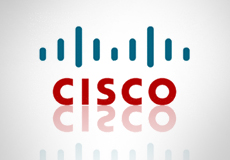By
Phil LelyveldApril 9, 2013
In a room at the back of the Cisco NAB booth (North Hall, A113), and in a few session presentations by UK VP of technology Simon Parnall, Cisco is showing its vision of the next generation of in-home audiovisual experiences. The company has prototyped a system that allows browsers to work among multiple tiled screens, seamlessly joined in any configuration, and built into walls in the home. Continue reading NAB 2013: Cisco Unveils Vision of its Second Screen 2.0
By
Rob ScottFebruary 7, 2013
Cisco predicts smartphones and tablets will account for three times more data consumption than desktops by 2017. The U.S. currently consumes significantly more data than any other nation — a trend Cisco expects to continue. However, consumers in Asia are expected to collectively pass North America. Cisco also predicts the average mobile user will consume 10 hours of video, 15 hours of audio, download 15 apps and take part in five video calls per month. Continue reading Cisco Forecast: Mobile Devices to Outnumber Humans by 2017
By
Dennis KubaJanuary 10, 2013
Cisco forecasts that by 2016 all forms of video (TV, VoD, Internet, and P2P) will account for some 86 percent of global consumer traffic. So how are they addressing such a future? At CES, the company presented its vision for the “Future of Television” by showcasing its newest version of Cisco Videoscape Unity, a hardware/software platform for video service providers (and we have video). Continue reading CES 2013: Cisco Intros New Take on Videoscape Unity (VIDEO)

By
Rob ScottApril 13, 2011
Wired comments on the demise of the Flip camcorder and questions what could have been done to possibly revive Cisco’s $590 million investment in the no-frills digital video camera (Cisco purchased Flip-maker Pure Digital in March 2009). Wired reports that in the wake of company earnings falling 18 percent in the second quarter of 2011, Cisco will pull the plug on Flip.
 In related news, The Wall Street Journal reports Cisco CEO John Chambers has announced a strategic shift at the company that will involve stepping away from consumer-targeted brands and returning to a focus on corporate customers and service providers.
In related news, The Wall Street Journal reports Cisco CEO John Chambers has announced a strategic shift at the company that will involve stepping away from consumer-targeted brands and returning to a focus on corporate customers and service providers.
Flip cameras were all the rage in their heyday and spawned a number of similar products from the likes of Kodak and Sony geared toward consumers who wanted to shoot simple video and easily upload clips to the Internet. An unanticipated result of the camera’s portability and durability included uses such as capturing extreme sports footage and gathering b-roll for broadcast news. Affordable mounts for helmets and motorcycles soon emerged, as well as waterproof casings for recording underwater footage, increasing the line’s popularity. So what happened?
Wired suggests that once iPhones and Android phones started offering improved camera capabilities, including HD video recording, the Flip cameras started down a path of redundancy. Second, came the shift to real-time social networking — and without an Internet connection, Flip had trouble competing with other connected portable devices. Consumers began to expect immediacy in terms of media interaction and the ability to post their own content on-the-go.
A Wi-Fi or 3G connection may have been the first step in keeping the Flip alive, but in today’s market it would probably also need a touchscreen with apps to compete.
Related Story: David Pogue offers a different take on the camera line — “The Tragic Death of the Flip” (4/14/11)
UPDATE: Related press release — “Cisco Announces Streamlined Operating Model” (5/5/11)
By
Rob ScottMarch 9, 2011
The two-day OTTcon (Over-the-Top TV and Video) conference took place the first week of March in San Jose, CA. In his opening keynote entitled “What Will Television Look Like in 20 Years?”, Scott Puopolo (VP Global Service Provider Practice for Cisco Internet Business Solutions Group) offered his company’s predictions on the immersive and collaborative future of TV.
Cisco interviewed 50 television experts with a focus on technology, consumer behavior, and business models to analyze the medium’s direction. Puopolo’s blog on the Cisco site offers an insightful overview of the results, including an interesting video and the implications for Cisco Videoscape. Highlights include:
Sensory Technology: “Sensory technology will enable new creative tools for producers and new experiences for consumers. So we’ll not only see Rachael Ray’s brownies — we’ll smell them, and eventually taste them, too.”
Multipurpose Screens: “Instead of buying TV sets per se, viewers will buy multipurpose screens. A screen in a bedroom could display your favorite painting or change into a teleconference monitor when you’re not watching TV.”
Interactive Collaboration: “Viewers will break the confines of the TV episode and interact with their favorite characters in everyday life. They could, for instance, collaborate with other fans to help key characters solve a crime or mystery.”
Gestural Interfaces: “Consumers will use words, gestures, and devices such as smartphones and iPads to control their TVs. You might raise the volume or choose a different show with a simple flick of your wrist.”



